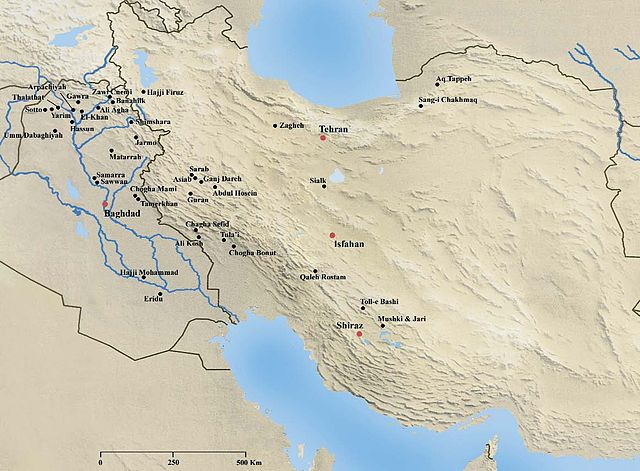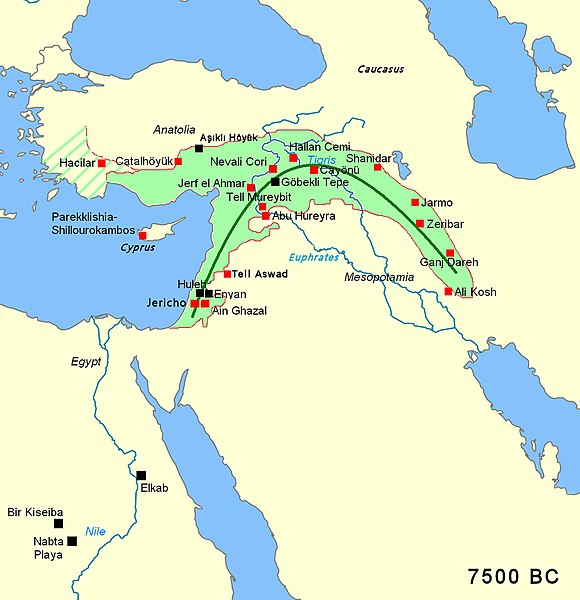
| ALI KOSH
Map showing location of Ali Kosh and other locations of early herding activity. Neolithic sites in Iran Location
:
Ilam Province
Ali Kosh is a small Tell of the Early Neolithic period located in Ilam Province in west Iran, in the Zagros Mountains. It was excavated by Frank Hole and Kent Flannery in the 1960s.
Site
:
Research has found three phases of occupation of the site over an almost 2,000 period, starting from about 9,500 years ago (7500 BCE). It was occupied originally by pre-pottery peoples.
Pottery was introduced to Ali Kosh during the third phase of its occupation. Nearby Chogha Sefid has only one pre-pottery phase, after which the occupation extended into the Chalcolithic period.
Area of the fertile crescent, circa 7500 BC, with main sites. Ali Kosh is one of the important sites of the Pre-Pottery Neolithic period. The area of Mesopotamia proper was not yet settled by humans Earliest
agriculture :
Similar site on the Deh Luran plain is Chogha Sefid, and also Tepe Abdul Hosein in Luristan. All three have similar stone tools. Ganj Dareh in Luristan (seen on the map), also similar, is even somewhat older than these.
Genetic
analysis :
Skull
modification :
"The
most striking feature of all crania was their more or less pronounced
artificial deformation that was evident in spite of post-mortem
alteration and fragmentation of all crania. In all cases circumferential
modification was evident, resulting from application of a band wrapped
around the cranium ... Artificial cranial deformation was common
in the Near East and especially in Iran during the Neolithic and
Chalcolithic..."
Ritual
tooth avulsion :
"Another cultural modification of the head observed at Ali Kosh was avulsion of the upper right first incisor in all adult males, but not in children nor adolescent individuals. ... Tooth avulsion was common during the Early Holocene in North Africa, and it was also occasionally observed in the Natufian culture ..."
Source :
https://en.wikipedia.org/ |

